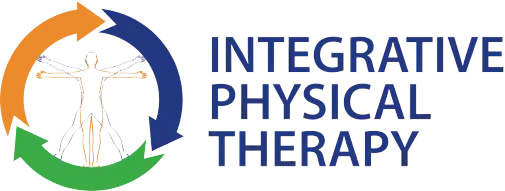Introduction
Hip impingement, medically known as femoroacetabular impingement (FAI), is a condition that can cause discomfort and limit mobility in the hip joint. Whether you’re an athlete, a fitness enthusiast, or simply someone experiencing hip pain, understanding the causes and effective management strategies, including physical therapy exercises, is crucial.
In this guide, we’ll delve into hip impingement exercises, exploring their benefits and how they can be a game-changer in your journey to hip health.
What is Hip Impingement and its Causes?
Hip impingement occurs when there is abnormal friction between the ball and the hip joint socket. This friction can lead to joint pain and limited range of motion, and if left untreated, may contribute to the development of conditions like osteoarthritis. The two main types of hip impingement are cam-type impingement, where the hip joint ball is not perfectly round, and pincer-type impingement, where the socket covers too much of the ball.
According to research, femoroacetabular impingement mostly impacts individuals between ages 20 and 40. The prevalence is estimated to be 10 to 15 percent. Almost 86 percent of patients had a combination of cam and pincer impingement. Approximately 14 percent of people have pure FAI pincer or cam impingement.
Common causes of hip impingement include anatomical abnormalities, repetitive hip movements, and trauma. Individuals involved in activities that require frequent hip flexions, such as certain sports or occupations, may be more prone to developing hip impingement.
Can this Condition be Prevented?
While certain anatomical factors leading to hip impingement may be unavoidable, adopting a lifestyle that promotes hip joint health can mitigate the risk. Engaging in exercises for hip impingement, maintaining a healthy weight, and practicing proper body mechanics during physical activities can contribute to overall hip joint well-being.
Conservative care, encompassing these lifestyle modifications, serves as a proactive approach to managing and potentially preventing the onset or progression of hip impingement, promoting a healthier active life and more resilient hip joints.
Are Physical Therapy Exercises for Hip Impingement Really Effective?
Yes, physical therapy exercises are a cornerstone in managing hip impingement. A skilled physical therapist can design a tailored exercise program to address muscle imbalances, improve joint mobilization, and enhance overall hip function. These exercises not only alleviate common symptoms but also contribute to long-term joint health.
A study found that an FAI-specific physical therapy program has a modest to large favorable effect on chronic hip pain, function, and hip adductor strength. Physical therapy demonstrated positive results in self-reported pain and function. It may hold more promise than intra-articular injection treatment.
Importance of Physical Therapy Exercises for Hip Impingement

Hip impingement physical therapy exercises are crucial in the comprehensive treatment option. They aim to improve flexibility, strengthen supporting muscles, and enhance joint stability. Through a targeted exercise program, individuals can experience reduced pain, increased range of motion, and improved functionality in daily living.
7 Hip Impingement Exercises
Hip Flexor Stretch
The hip flexor stretch is a fundamental exercise to alleviate tension in the front of the hip, a common area affected by impingement.
Instructions:
- Begin by kneeling on your right knee, ensuring it forms a right angle.
- Place your left foot in front, forming a 90-degree angle at the knee.
- Gradually shift your weight forward onto the left foot.
- Continue until you feel a gentle stretch in the front of your right hip.
- Maintain the stretch for 15-30 seconds, allowing the hip muscles to relax.
- Switch sides and repeat the sequence.
This stretch targets the hip flexors, promoting flexibility and reducing tightness that can contribute to hip impingement discomfort.
Piriformis Stretch
The piriformis stretch targets the tight muscles in the hip, relieving tension and promoting hip joint flexibility.
Instructions:
- Sit on the edge of a chair with your feet flat on the ground.
- Keep your back straight and shoulders relaxed.
- Cross your right ankle over your left knee, forming a figure-four shape.
- Gently press down on your right knee with your hand until you feel a stretch in your right buttock.
- Hold the stretch for 15-30 seconds.
- Release and switch to the opposite side, crossing your left ankle over your right knee.
This stretch targets the piriformis muscle, which can contribute to hip impingement symptoms when tight.
Groin Stretch
The groin stretch is essential for improving the flexibility of the inner thigh muscles, contributing to a balanced and functional hip joint.
Instructions:
- Sit on the floor with the soles of your feet together, allowing your knees to fall outward.
- Hold your feet with your hands, gently pressing your knees toward the floor.
- Maintain the stretch for 15-30 seconds.
This stretch targets the adductor muscles of the groin, enhancing flexibility and reducing strain on the hip joint.
Hip Strengthening
Strengthening the hip muscles is crucial for providing better support to the joint, reducing the risk of impingement-related discomfort.
Instructions:
- Lie on your back with your knees bent and feet flat on the floor.
- Engage your glutes and lift your hips toward the ceiling.
- Hold the lifted position for a few seconds.
- Lower your hips back down and repeat the movement for 10-15 repetitions.
This effective exercise targets the gluteal muscles, promoting stability and strength in the hip joint.
Core Strengthening
A strong core is essential for overall stability and can significantly contribute to alleviating hip impingement symptoms.
Instructions:
- Lie on your back with your legs lifted toward the ceiling.
- Lift your head and shoulders off the ground, engaging your core.
- Hold the lifted position for a few seconds.
- Lower your upper body back down and repeat the movement for 10-15 repetitions.
This exercise engages the abdominal muscles, enhancing core strength and stability.
Balance and Proprioception Exercise
Improving balance and proprioception is crucial for enhancing joint awareness and stability, key components in managing hip impingement.
Instructions:
- Stand on one leg while maintaining a slight bend in the knee for stability.
- Hold the single-leg stance for 30 seconds.
- To intensify the exercise, try closing your eyes or standing on an unstable surface.
This exercise challenges the body’s balance, promoting improved proprioception.
Functional Training
Functional training involves performing activities that mimic daily movements, promoting the integration of strength and flexibility into practical tasks.
Instructions:
- Perform functional movements such as squats, lunges, and step-ups.
- Emphasize proper form and controlled movements to avoid undue stress on the hip joint.
Functional training encourages applying strength and flexibility gained from exercises to real-life activities, fostering overall joint health.
Benefits of Hip Impingement Exercises

The benefits of incorporating these exercises into your routine are multifaceted. These benefits extend beyond the alleviation of immediate discomfort, offering a comprehensive approach to improving hip joint health and overall well-being.
Increased Joint Flexibility
One of the primary benefits of engaging in hip impingement exercises is the noticeable increase in joint flexibility. The stretching components of these exercises work synergistically to enhance the range of motion in the hip joint. As the muscles and connective tissues surrounding the hip become more supple, individuals often experience greater ease of movement, reduced stiffness, and a sense of increased fluidity in their daily activities.
Improved Muscle Strength
Hip impingement exercises target specific muscle groups critical for maintaining hip joint stability. By regularly engaging in these exercises, individuals address the imbalances contributing to impingement and foster muscle strength development. Strengthening the muscles around the hip joint provides added support, reducing the likelihood of abnormal friction and improving overall joint function.
Enhanced Joint Stability
The targeted nature of hip impingement exercises extends to promoting joint stability. As the supporting muscles become stronger and more resilient, they contribute to the stabilization of the hip joint during various movements. This increased stability is paramount in preventing excessive wear and tear on the joint and reducing the risk of further complications, such as the progression to osteoarthritis.
Reduction in Pain and Discomfort
The most immediate and tangible benefit of consistent hip impingement exercises is the reduction in pain and discomfort. The stretching and strengthening activities help alleviate the stress on the hip joint, mitigating the friction that causes pain. Individuals often report a decrease in the intensity and frequency of discomfort associated with hip impingement, fostering a more comfortable and active lifestyle.
Promotion of Overall Joint Health
Beyond the specific benefits related to hip impingement, regular exercise promotes overall joint health. Physical activity stimulates blood flow, delivering essential nutrients to the joint tissues and facilitating the removal of waste products. This process supports the maintenance and repair of joint structures, reducing the risk of degenerative conditions and enhancing the longevity of joint health.
Prevention of Further Complications
Engaging in hip impingement exercises serves as a proactive measure in preventing the worsening of existing issues and the development of additional complications. By addressing muscle imbalances, improving flexibility, and strengthening supporting structures, individuals create a resilient foundation for their hip joint, minimizing the risk of future problems and preserving long-term joint function.
Consider Consulting Integrative PT for Hip Discomfort
Suppose you find yourself grappling with persistent hip discomfort or suspecting the presence of hip impingement. In that case, it is highly advisable to consider seeking professional guidance from Integrative Physical Therapy. Consulting with a physical therapist can be a pivotal step toward understanding, managing, and ultimately overcoming the challenges associated with hip issues.
Conclusion
In the realm of hip impingement, knowledge and proactive management are key. Understanding the causes, adopting preventive measures, and incorporating targeted physical therapy exercises can significantly improve your hip joint health. The exercises outlined here, when performed consistently and under the guidance of a professional, can be a powerful tool in managing and even alleviating hip impingement symptoms.
By integrating these exercises into your routine, you are taking proactive steps toward addressing hip impingement and enhancing your overall well-being, positively impacting your daily life.
FAQs
How Does Physical Therapy Help Hip Impingement?
Physical therapy for hip impingement focuses on addressing muscle imbalances, improving joint mobility, and enhancing overall hip function. Through targeted exercises, individuals can experience reduced pain and improved functionality in daily life and various recreational activities.
Can I Squat with Hip Impingement?
While squats may aggravate people with hip impingement, proper form and activity modification can make them accessible. Consult a physical therapist to determine the feasibility of including squats in your exercise routine.
Should You Exercise with Hip Impingement?
Yes, exercise, particularly under the guidance of a physical therapist, is beneficial for people with hip impingement. It can help alleviate symptoms, improve joint function, and contribute to long-term joint health. Prior to beginning a new exercise plan, you should consult a physical therapist, especially if you already have a pre-existing condition like hip impingement.


